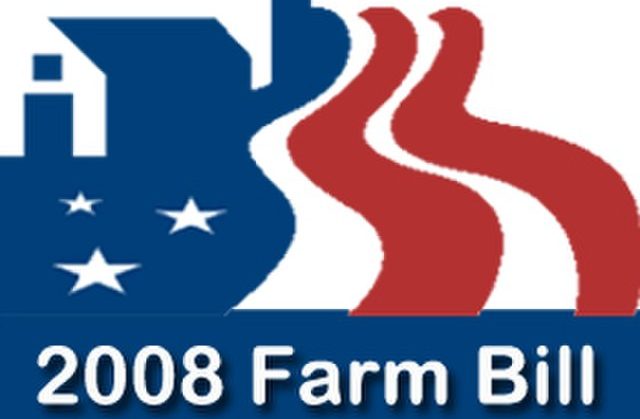Following his surprise stepping down as the Democratic Party’s presidential nominee, President Joe Biden Ag legacies are worth appraisal.
In brief, most of his successes revolve around climate, rural funding and partially around the Farm Bill.
Firstly, Agriculture Secretary Tom Vilsack on July 21, 2024 praised his close ally as among “the most consequential American presidents.”
Vilsack also summarized some agricultural breakthroughs since his 2021 re-appointment as Ag secretary in food security and international market expansion.
Biden Ag’s Rural Funding
The above remarks trace a beginning in October 2023 following the feds’ announcement of $5 billion to fund rural farming infrastructure.
Under the name “Investing in Rural America Event Series,” Biden travelled across the states visiting the farms readying for these investments.
Climate-Smart Agriculture
At the same October 2023 timeline, the White House also announced $1.7 billion in climate-smart Ag funds.
Earlier in September 2023, the President had visited Arizona where a man heckled him to declare a climate emergency. By then Biden seemed the only sitting president capable to invoke Executive Orders to help keep the global temperature below 1.5ºC.
President Biden went ahead and legislated the 2024-2031 Inflation Reduction Act (IRA) to fund climate-leaning Ag programs with $19.5 billion.
Though the bill is still under debate over its high financing, it was one of the president’s agricultural scores.
USDA Projects under Biden Ag Direction
Despite a handsome score sheet, the U.S. Department of Agriculture (USDA) has nevertheless shown some mixed results under Biden.
One of the latest stumbling blocks for the agency is political pressure against its finalizing the Packers and Stockyards Act (PSA). However, Republicans look forward to preventing USDA from making its final rules during Biden’s administration. If it finalizes, however, the 1921 bill will benefit livestock and poultry producers against huge corporations that try to further their interests.
Politics aside, USDA has been promoting organic farming through individual grants such as a $250,000 disbursal to flower farmers in Montana in December 2023.
As a whole, states like Montana received at least $ 2 million under the Biden-USDA direction. SME farmers have also bagged up to $12.4 million to boost the food supply chain, a case point being Ohio.
Expensive Farm Bill
Biden also oversaw the “stop-gap” extension of the 2018 Farm Bill, which funds virtually all aspects of the American food system.
The stop-gap aimed to prevent stalling of funding for various food agencies and nutritional programs in time for a new bill.
Currently, the new Farm Bill proposal for 2025-2034 is stalled because of its huge budget of $1.5 trillion. This is double that of its 2018 predecessor at $867 billion. The deadline is September 30, 2024 and Congress could have to extend the 2018 Farm Bill as it did in 2023.
In a word, Biden Ag policies reflect by and large a successful administration in climate and nutrition. The decamping president also agitated against bloated retail prices in the food sector. And for other bits, the statistics below show the wider picture of various U.S. presidents’ historical successes in the Ag sector.
United States Ag Sector Historical Successes
1933-1996
One of the most significant agricultural policy in the past 90 years was the Farm Bill. The Farm Bill began in 1933 under President F.D. Roosevelt’s New Deal, to support people during the Great Depression years. Since then, the 1949 Farm Bill under Harry S. Truman’s presidency became the most consulted. It often serves as fallback when modern Farm Bill terms lapse with no consensus for a new bill.
2008
Export momentum peaked in the late 2000’s. During the George W. Bush presidency in 2008, American food and agricultural exports reached a dream $100 billion. This was a far cry from wartime exports in 1942 of just $1 billion, according to USDA.
2010
Farmer support and nutritional programs developed rapidly in the 2010s. In 2010 under the Barack Obama presidency, the Supplemental Nutrition Assistance Program (SNAP) program, which caters for food and nutrition, matured. It apparently saved 3.9 million American citizens, 43.5% of which children, from poverty.
2011
Farmers’ income increased drastically for the first time. This was the year when farm earnings in the United States reached a record $100 billion, according to PBS.
2014-2022
A surge in agricultural exports and the delayed renewal of the Farm Bill marked a new era. Ag exports reached a record $150 billion in 2014 under Obama and in 2022, under Biden, they snapped the $200-billion mark. However, it was a delayed renewal of the 2014 Farm Bill that much impacted American food supplies in the 2020s. This is because most of the 2014 bill’s programs returned in 2018 under President Trump, and continued under Biden. It required over 21 months to pass the 2014 bill through two different Congress terms.
